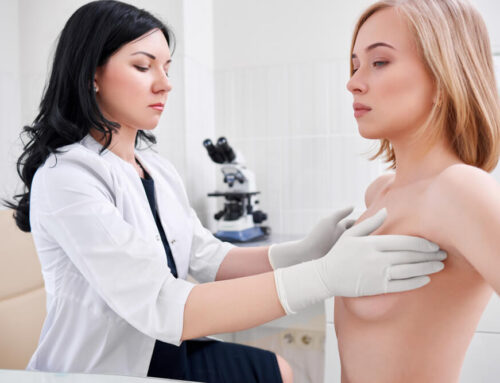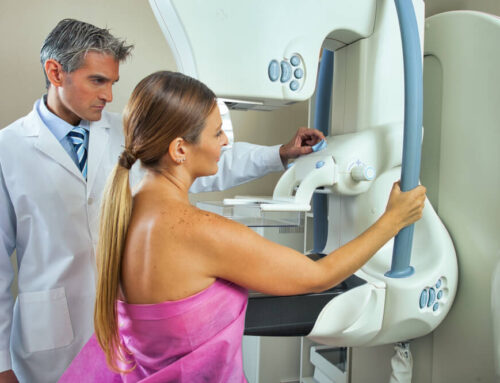Breast abscesses are a painful and potentially dangerous condition that can occur in women of all ages, but they are most common in those who are breastfeeding. They can occur for various reasons, including infection, inflammation, and injury, and they can cause a range of symptoms that can be debilitating for some women. In this article, our experts at Breast Care Center Miami will explore potential breast abscess causes, the symptoms that can occur, and the various breast abscess treatment options available to those affected by this condition.
What’s a Breast Abscess?
A breast abscess is a localized collection of pus that forms within the breast tissue. It can occur in any part of the breast, but it is most common in the area around the nipple (areola) or in the upper and outer quadrants of the breast. Various factors, including infection, inflammation, and injury, can cause breast abscesses. They can be painful, swollen, and warm to the touch and can come with many symptoms that can be difficult to manage.
What Could Cause a Breast Abscess?

There are many potential breast abscess causes, but they are most commonly associated with infection. Bacteria can enter the breast tissue through a break in the skin, such as a cracked or sore nipple, and begin to multiply. This can lead to inflammation and the formation of pus within the breast tissue, which can cause pain, swelling, and redness.
Other factors that can contribute to the development of a breast abscess include trauma or injury to the breast, such as a fall or sports injury, or a breast biopsy or other medical procedure. In addition, women who are breastfeeding may be more susceptible to breast abscesses due to the hormonal changes that occur during lactation, which can increase the risk of breast infection.
Common Symptoms of a Breast Abscess
The symptoms of a breast abscess can differ based on the condition’s severity and the location of the abscess within the breast tissue. Symptoms that may be experienced include:
- Pain or tenderness in the affected breast
- Swelling or redness of the breast tissue
- Warmth or heat in the affected area
- A visible lump or mass in the breast tissue
- Nipple discharge, which may be thick and yellow or green in color
- Fever or chills
- Fatigue or malaise
Different Types of Breast Abscess
There are two main types of breast abscesses: lactational and non-lactational. Lactational abscesses occur in breastfeeding women and are typically caused by a blockage in the milk ducts. Non-lactational abscesses can occur in women who are not breastfeeding and are usually caused by an infection or inflammation in the breast tissue. Non-lactational abscesses can also occur in men, although this is rare. Both types of breast abscesses can be painful and require medical attention for proper diagnosis and treatment.
How Is a Breast Abscess Diagnosed?
If a breast abscess is suspected, a doctor will typically perform a physical examination of the affected breast to check for signs of swelling, redness, or warmth. In addition, they may order imaging tests such as a mammogram or ultrasound to help confirm the diagnosis and determine the location and size of the abscess.
If the abscess is large or located deep within the breast tissue, a doctor may also perform a needle aspiration or biopsy to remove a sample of the pus and test it for the presence of bacteria or other pathogens.
Breast Abscess Treatment Options
Treating a breast abscess will depend on the severity of the condition and the underlying cause. In most cases, antibiotics will be prescribed to help clear the breast infection and prevent it from spreading. Pain relief medications such as acetaminophen or ibuprofen may also be recommended to help manage the pain and discomfort associated with the condition.
In some cases, a doctor may also recommend draining the abscess to remove the pus and reduce swelling. This can be done using a needle aspiration, in which a needle is inserted into the abscess, and the pus is removed. In more severe cases, surgery may be required to remove the abscess and any surrounding tissue the infection has damaged.
The Recovery Process for a Breast Abscess
The recovery process for a breast abscess will depend on the severity of the condition and the type of treatment that is required. In general, it may take several weeks for the abscess to heal fully, and it is essential to follow any instructions provided by the doctor to ensure proper healing.
During recovery, keep the affected breast clean and dry, and avoid wearing tight-fitting clothing or bras that could irritate the skin. A doctor may also recommend applying warm compresses to the affected area to help reduce swelling and promote healing.
Continue taking any prescribed medications as directed, even if symptoms improve, to ensure that the infection is fully cleared. Follow-up appointments with a doctor may also be necessary to monitor the healing process and ensure that there are no complications.
What to Do About Breastfeeding in This Case?
Breastfeeding can be challenging when a woman has a breast abscess, but it is usually still possible to continue breastfeeding with some modifications. In some cases, a doctor may recommend temporarily stopping breastfeeding on the affected breast to allow it to heal.
If a woman can continue breastfeeding, it is essential to make sure that the baby is able to latch correctly to avoid further irritation of the affected breast tissue. A doctor may also recommend pumping or expressing milk from the affected breast to help relieve pressure and prevent the formation of new abscesses.
What Signs Point to Infection?
Some signs that may indicate an infection in a breast abscess include fever or chills, redness or warmth in the affected area, and a foul-smelling discharge from the nipple. Seek medical attention if any of these symptoms occur, as untreated infections can lead to severe complications.
Potential Complications From Untreated Infection

If a breast abscess is left untreated, it can lead to a range of complications, including the spread of infection to other parts of the body, the formation of additional abscesses, and the development of a chronic infection.
In severe cases, untreated infections can also lead to the development of sepsis. This potentially life-threatening condition occurs when the body’s immune system responds to an infection in a way that can damage tissues and organs.
Is There a Way to Prevent a Breast Abscess?
While there is no guaranteed way to prevent a breast abscess, some steps can be taken to reduce the risk of developing this condition. These include:
- Practicing good hygiene, such as washing the nipples and surrounding areas regularly
- Using proper breastfeeding techniques to avoid nipple damage or irritation
- Wearing properly fitting bras and clothing to prevent injury or irritation to the breast tissue
- Seeking prompt medical attention for any signs of infection or inflammation in the breast tissue
Breast abscesses can be a painful and challenging condition, but with prompt treatment and proper care, most women are able to fully recover and avoid complications. If you are experiencing any symptoms of a breast abscess, seek medical attention immediately to ensure proper diagnosis and treatment.






